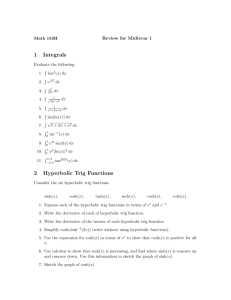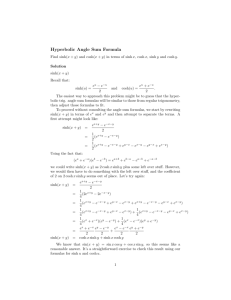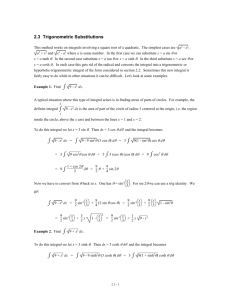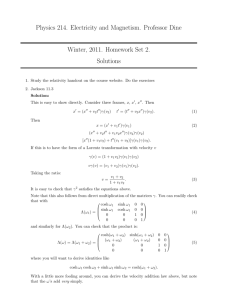Example 1 Show that coshz = coshxcosy + isinhxsiny sinhz
advertisement
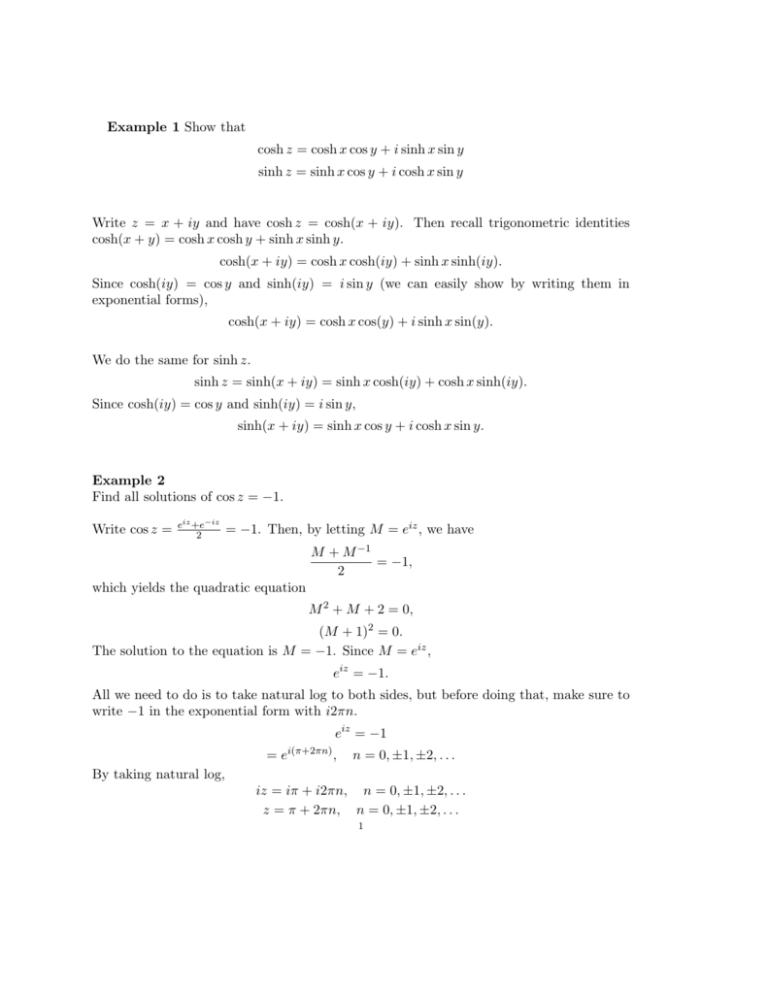
Example 1 Show that cosh z = cosh x cos y + i sinh x sin y sinh z = sinh x cos y + i cosh x sin y Write z = x + iy and have cosh z = cosh(x + iy). Then recall trigonometric identities cosh(x + y) = cosh x cosh y + sinh x sinh y. cosh(x + iy) = cosh x cosh(iy) + sinh x sinh(iy). Since cosh(iy) = cos y and sinh(iy) = i sin y (we can easily show by writing them in exponential forms), cosh(x + iy) = cosh x cos(y) + i sinh x sin(y). We do the same for sinh z. sinh z = sinh(x + iy) = sinh x cosh(iy) + cosh x sinh(iy). Since cosh(iy) = cos y and sinh(iy) = i sin y, sinh(x + iy) = sinh x cos y + i cosh x sin y. Example 2 Find all solutions of cos z = −1. Write cos z = eiz +e−iz 2 = −1. Then, by letting M = eiz , we have M + M −1 = −1, 2 which yields the quadratic equation M 2 + M + 2 = 0, (M + 1)2 = 0. The solution to the equation is M = −1. Since M = eiz , eiz = −1. All we need to do is to take natural log to both sides, but before doing that, make sure to write −1 in the exponential form with i2πn. eiz = −1 = ei(π+2πn) , n = 0, ±1, ±2, . . . By taking natural log, iz = iπ + i2πn, n = 0, ±1, ±2, . . . z = π + 2πn, n = 0, ±1, ±2, . . . 1 2 The answer was expectable because obviously cos(π + 2πn) = −1 for integers n. However, it is not so obvious often (for example, cos z = −i5), so make sure to understand the way of solving as shown above. Example 3 Find Lnz and ln z of z = 2 − i. Write z = 2 − i in an exponential form. Since Arg(z) = −π/3, √ z = 2 − i = 5ei(−π/3+2πn) , n = 0, ±1, ±2, . . . Then, √ π ln z = ln 5 − i + i2πn, n = 0, ±1, ±2, . . . 3 The principal value Lnz corresponds to the value of ln z without i2πn so that √ π Lnz = ln 5 − i . 3


